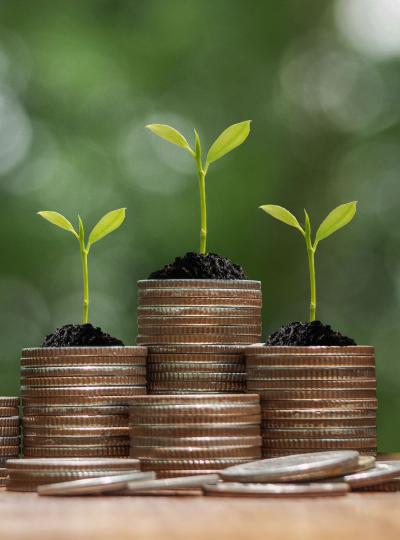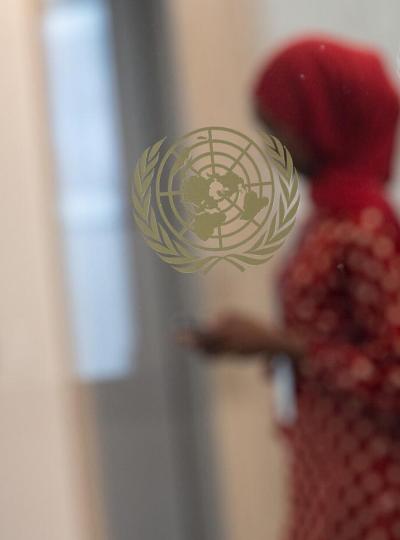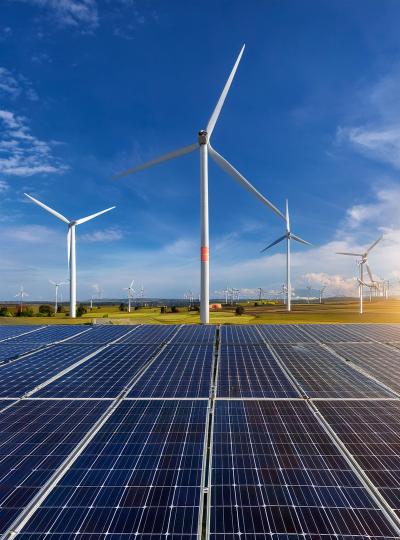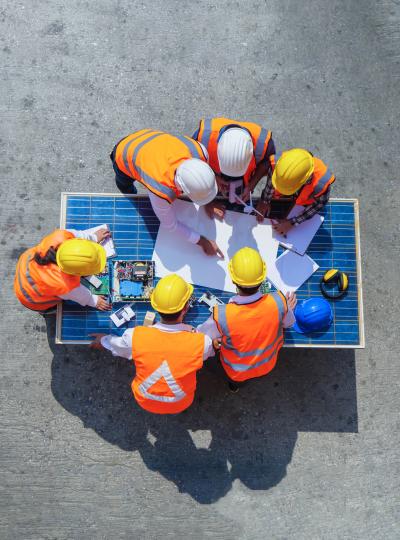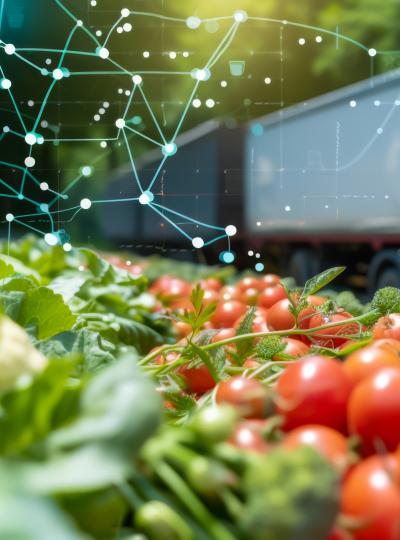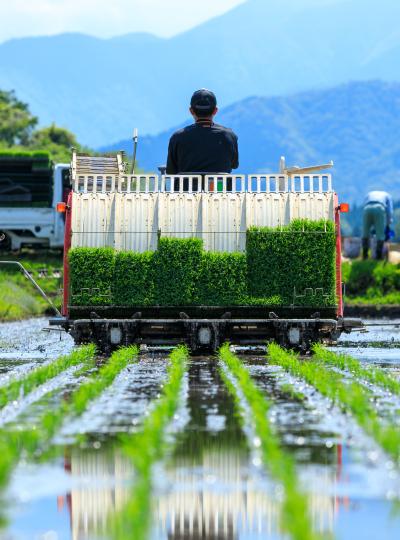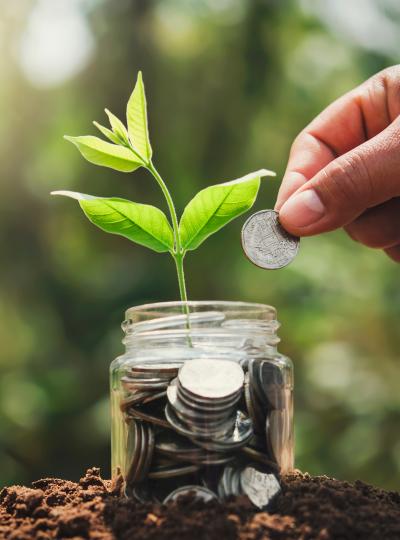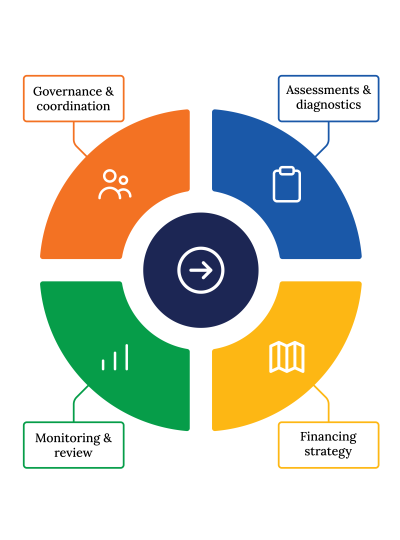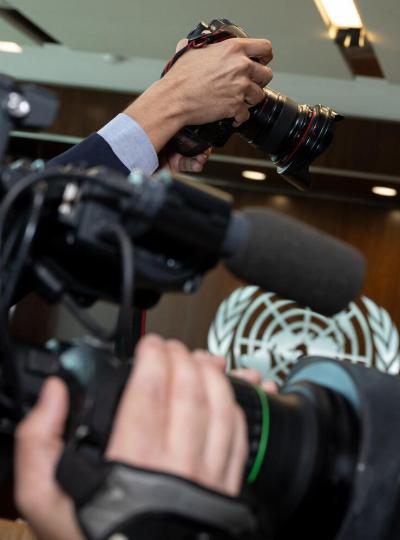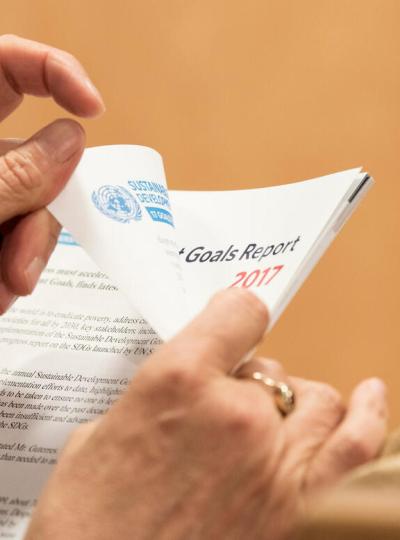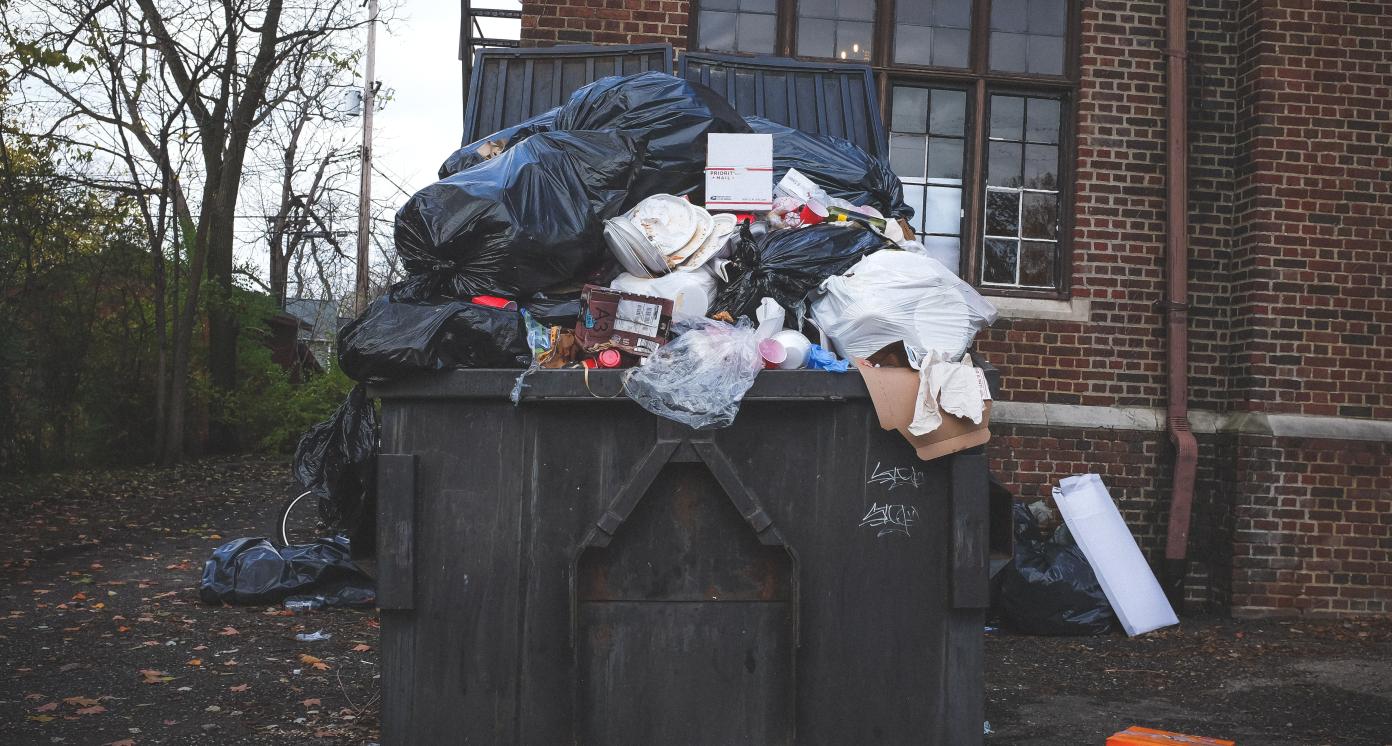Solid waste processing using environmentally efficient technologies
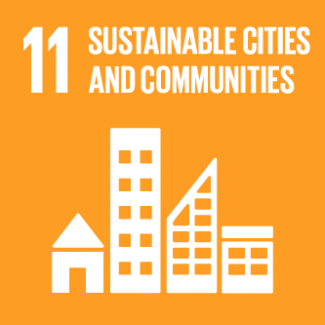
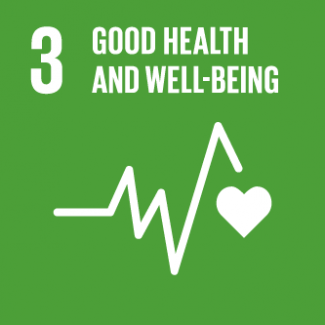
Business Model Description
Invest in modern technologies for solid waste processing, e.g. pyrolysis with energy recovery, to reduce treatment costs, sanitary landfilling, and microbial production. The investment can focus on solutions for solid waste recycling or the application of advanced technologies for processing solid waste before landfilling. This IOA is B2B, in which the buyers are municipalities or businesses.
VWS (Vietnam Waste Solution) invests over USD m 100 in new technology at Da Phuoc Waste Treatment Complex to turn waste into electricity, liquid fertilizer, and compost to reduce the landfill rate, carbon, and Greenhouse Gas Emissions (3). The California Waste Solution is currently the major investor of VWS.
Expected Impact
This investment can improve household and commercial waste treatment performance, thereby reducing environmental pollution and improving health for local communities.
How is this information gathered?
Investment opportunities with potential to contribute to sustainable development are based on country-level SDG Investor Maps.
Disclaimer
UNDP, the Private Finance for the SDGs, and their affiliates (collectively “UNDP”) do not seek or solicit investment for programmes, projects, or opportunities described on this site (collectively “Programmes”) or any other Programmes, and nothing on this page should constitute a solicitation for investment. The actors listed on this site are not partners of UNDP, and their inclusion should not be construed as an endorsement or recommendation by UNDP for any relationship or investment.
The descriptions on this page are provided for informational purposes only. Only companies and enterprises that appear under the case study tab have been validated and vetted through UNDP programmes such as the Growth Stage Impact Ventures (GSIV), Business Call to Action (BCtA), or through other UN agencies. Even then, under no circumstances should their appearance on this website be construed as an endorsement for any relationship or investment. UNDP assumes no liability for investment losses directly or indirectly resulting from recommendations made, implied, or inferred by its research. Likewise, UNDP assumes no claim to investment gains directly or indirectly resulting from trading profits, investment management, or advisory fees obtained by following investment recommendations made, implied, or inferred by its research.
Investment involves risk, and all investments should be made with the supervision of a professional investment manager or advisor. The materials on the website are not an offer to sell or a solicitation of an offer to buy any investment, security, or commodity, nor shall any security be offered or sold to any person, in any jurisdiction in which such offer would be unlawful under the securities laws of such jurisdiction.
Country & Regions
- Vietnam: Northern Key Economic Zone
- Vietnam: Central Key Economic Zone
- Vietnam: Eastern South Region
Sector Classification
Infrastructure
Development needs
6.3% of the population in rural areas does not have access to sanitary water (2018) (9). An average of 84.3% of solid waste from urban activities is collected and treated as per national standards but this is mainly for landfills, and the ratio is much lower in some regions (e.g. 63% in the Highlands) (2018) (2), social housing achieved 41.7% of the national target (2020) (15)
Policy priority
as specified in the Socio-economic Development Strategy 2021-2030 of the Vietnam Communist Party, infrastructure development is one of Vietnam's key strategic development pillars. In addition, the application of high and green technology by the private sector is strongly encouraged by the government for infrastructure projects (10).
Gender inequalities and marginalization issues
Women account for half of the 64m population in rural areas (65% of Vietnam's total population) that suffers from underdeveloped infrastructure services, including pollution caused by solid waste, and unhygienic water supply (14, 16)
Investment opportunities introduction
Vietnam's waste management market was valued at USD 3.8 billion in 2020 (4), the potential of electricity generation from solid waste is estimated at 1,517 MW with an average power output of 10,617,740 GWh/year (11), and the investment demand in the water sector is estimated between $1.3 billion to $2.7 billion over the next 10 years (12).
Key bottlenecks introduction
varied by investment but usually complex due to involvement with multiple partners and challenging negotiation with provincial authorities/ municipalities
Waste Management
Development needs
Vietnam lacks the adequate capacity to process solid waste: 75 % of collected solid waste is went into landfills in 2020 and 80% of this is not compliant with sanitary standards (TCVN 6696:2000 by STAMEQ); the rate of waste collection is only approximately 40% and 60-80% in rural and urban areas respectively (2)
Policy priority
as stated in the National Strategy on Waste Management, by 2025, 90% and 80% of solid waste in urban and rural areas respectively will be collected and treated as per environmental standards and the rate of directly buried waste will be less than 30%; 80% of waste from industrial activities is recycled and processed (22)
Gender inequalities and marginalization issues
Women account for half of the 63 m population in rural areas (16) that suffer from pollution caused by improper processing of solid waste and limited access to clean water (18). Over 50,000 women are working in waste management with polluted working condition that causes dangerous illness like respiratory tract or gastrointestinal infections(2).
Investment opportunities introduction
(a) Solutions for solid waste recycling, (b) Application of advanced technologies for processing solid waste before going to landfills (The current investment in technologies is low; waste processing equipment/ machine is generally outdated causing environmental pollution), (c) Waste-to-energy generation
Key bottlenecks introduction
the service cost for solid waste processing and land access is defined by the negotiations with the local governments (provincial and municipal).
Waste Management
Pipeline Opportunity
Solid waste processing using environmentally efficient technologies
Invest in modern technologies for solid waste processing, e.g. pyrolysis with energy recovery, to reduce treatment costs, sanitary landfilling, and microbial production. The investment can focus on solutions for solid waste recycling or the application of advanced technologies for processing solid waste before landfilling. This IOA is B2B, in which the buyers are municipalities or businesses.
VWS (Vietnam Waste Solution) invests over USD m 100 in new technology at Da Phuoc Waste Treatment Complex to turn waste into electricity, liquid fertilizer, and compost to reduce the landfill rate, carbon, and Greenhouse Gas Emissions (3). The California Waste Solution is currently the major investor of VWS.
Business Case
Market Size and Environment
USD 100 million - USD 1 billion
5% - 10%
27.8 million tons of solid waste in 2018, 63,000 tons/day from households (4)
75% of Vietnam's solid waste (equivalent to about 20 m tons) is being landfilled, and 80% of the landfilled amount is unhygienic and is polluting the environment, due to improper processing. The cost of processing solid waste is approximately 20 - 40 USD/ton (2)
The five biggest cities in Vietnam -Hanoi, Ho Chi Minh City, Haiphong, Da Nang, and Can Tho – account for about 70% of the total waste generation. The municipal solid waste contains 60% to 70% of biodegradable residues by wet weight (2)
Indicative Return
10% - 15%
Citenco is a solid waste management business in Ho Chi Minh, having achieved ROI at a consistent level of 10% in the last 5 years (5). Other similar businesses listed on the stock exchange has ROIs in the range 5% - 15%.
Investment Timeframe
Medium Term (5–10 years)
ROI is estimated to be 10 - 15%. Revenue and cash flow are relatively guaranteed because the service price for waste processing is negotiated upfront with the provincial governments. The setup time realistically takes about 2 - 3 years.
Ticket Size
Ticket size will vary by investment per-day capacity: a minimum investment is 50 tons/day capacity is in usual practice, and the maximum capacity can be up to a few thousand tons/day. The estimated investment standard is worth about 20,000 USD/ton/day (6)
Market Risks & Scale Obstacles
Market - Highly Regulated
Capital - CapEx Intensive
Impact Case
Sustainable Development Need
Waste management is an important area contributing to the mitigation-related goals to reduce Greenhouse Gas emissions [GHG] as identified by the Nationally Determined Contribution (NDC) of Vietnam.
Approximately 75% of solid waste collected throughout the country are treated by the landfill method, of which about 80% are sanitarily disqualified, leading to serious environmental pollution in the areas where the landfills are located (2)
Gender & Marginalisation
Women are a major force in the informal solid waste collection that accounts for over 30% of the waste. These are on low income due to limited collection, and also suffering from environmental pollution caused by leakages at the landfills.
Expected Development Outcome
Contribution to Vietnam's aspiration for a circular economy; Improvement of the quality of life of the population in general, by reducing pollution, especially in urban areas. For those involved in the waste management sector, it is the improvement in the income and working environment.
Contribute to reducing GHG emission, and energy-saving - the CO2 reduction is estimated to be 0.12 tons per garbage ton (37)
Gender & Marginalisation
Women and informal workers in the landfill areas will benefit from the improved environment that is resulted from the waste processing as per sanitary standards.
Primary SDGs addressed

11.6.1 Proportion of municipal solid waste collected and managed in controlled facilities out of total municipal waste generated, by cities
84.3% of urban solid waste from households is collected and treated as per the national standards and technical regulations. This proportion is uneven across cities and regions. For example, this rate in urban areas in the Central Highlands only reached 61% in 2018 (2)
Percentage of municipal solid waste collected and treated as per standards and regulations: 90% in 2025 and 95% in 2030 (7)
Secondary SDGs addressed

Directly impacted stakeholders
People
Gender inequality and/or marginalization
Planet
Corporates
Public sector
Indirectly impacted stakeholders
People
Gender inequality and/or marginalization
Planet
Corporates
Public sector
Outcome Risks
Improved environment and contribution to GHG emission reduction may not be fully achieved if wrong technologies are selected.
Thinly populated areas and rural areas may remain unserved, due to the need for densely populated geographies to realize economies of scale, leading to imbalances in waste management.
Business models, at a time, can deploy technology only for one type of waste recycling/processing, thus resulting in the exclusion of certain categories of waste.
Gender inequality and/or marginalization risk: In the absence of sufficient regulations/controls waste workers/ collectors stand to be exposed to exploitative practices by operators.
Impact Risks
Ineffective operational management leads to low profitability, and so, crowding out investment, unfavorably affecting the target of 95% of solid waste treated as per the required standards.
Scaling up the technology in waste processing without adequate safety, capacity building and income security measures for waste picker communities can lead to further marginalization challenges.
Gender inequality and/or marginalization risk: Lack of private participation in this sector will aggravate the burden on the Government to spend on waste management and environmental conservation.
Impact Classification
What
This investment help to improve the environment by reducing pollution and GHG emission by properly treating household and industrial solid waste
Who
All people and communities in Vietnam, especially those in the urban area
Risk
Low-to-medium risk given the demand is guaranteed in the beginning, and the demand is also increasing over time due to economic development and increasing public consciousness for waste management
Contribution
State investment in waste treatment infrastructure accounts for about 80% (35% from the state expenditure budget and 45% from ODA); the private sector covers about 20% (2)
How Much
About 16m tons of solid waste (80% of 20 m tons of landfilled solid waste) is being unprocessed (2)
Impact Thesis
This investment can improve household and commercial waste treatment performance, thereby reducing environmental pollution and improving health for local communities.
Enabling Environment
Policy Environment
National Strategy on Waste Management: Apply advanced environmental-friendly technologies in waste management, to generate energy, reduce emissions, and develop the recycling industry; Mobilize different sources for investment and promote public-private partnerships in waste management projects (22)
National Strategy on Integrated Management of Solid Waste to 2025, Vision for 2050: All solid waste is collected, reused, recycled, and thoroughly treated with advanced, environmentally friendly technologies, limiting the volume of solid waste to be buried to a minimum. (33)
GoV, Decision, 1979/QĐ-TTg, Decision 1440/QĐ-TTg, and Decision 1873/QĐ-TTg: Governmental Inter-region waste management plan sets out specific objectives for a percentage of waste collection and treatment; 59/63 provinces also have their own plan for solid waste management. (23)
GoV, Decision 2211/QĐ-TTg, 2013, Decision 07/QĐ-TTg, 2015 and Decision 223/QĐ-TTg, 2015: management plans on solid waste for three different river areas - Cau River, Dong Nai River, and Nhue River respectively (26, 32)
National Strategy on Integrated Management of Solid Waste to 2025, Vision for 2050: All solid waste is collected, reused, recycled, and thoroughly treated with advanced, environmentally friendly technologies, limiting the volume of solid waste to be buried to a minimum (35)
Financial Environment
GoV, Circular 121-2008-TT-BTC: Guidelines on financial incentives on investment in solid waste management. Various financial incentives: tax, land, a preferential rate of the loan (decided on a case-by-case basis) (25)
Decree 32/2017/NĐ-CP: provides preferential credit for encouraged investments, including solid waste processing businesses (28)
Other incentives: Decree 78/2014/TT-BTC and 31/2021/NĐ-CP: Guidelines on corporate income tax, provide the term of preferential income taxes, including the investments in waste management (33,34)
Regulatory Environment
Law of Environment Protection 2014: regulations on environmental protection, including rights, obligations, and responsibilities of agencies, organizations, communities, households, and individuals. It also covers technical standards on solid waste management infrastructure (21)
Law on Fees and Charges (2015): regulations on the list of fees and charges; fee and charge payers; organize the collection of fees and charges; principles of determining the rates of collection, exemption, reduction, collection, payment, management, and use of fees and charges (30)
GoV, Decree 38/2015/ND-CP: Regulations on waste management, including hazardous waste, domestic solid waste, ordinary industrial solid waste, liquid waste products, wastewater, industrial waste, and other specific wastes (31)
Law on Investment by Public-Private Partnership: regulations on investment under the public-private partnership, State management, rights, obligations, and responsibilities of agencies, organizations, and individuals related to investment activities in the form of public-private partnership (29)
Marketplace Participants
Private Sector
Multiple players are active in different provinces/ regions in Vietnam, including Everbright Environment, Vietnam Waste Solution, Green Energy T&J, Hue Phuong Vietnam Green Environment, Thien Y Energy & Environment.
Government
Municipalities, provincial governments, Ministry of Resources and Environment (MONRE), Ministry of Science and Technology (MoST)
Multilaterals
World Health Organisation (WHO), United Nations Entity for Gender Equality and the Empowerment of Women (UN Women), United Nations Development Programme (UNDP), United Nations Children's Fund (UNICEF), Asian Development Bank (ADB), and World Bank (WB).
Non-Profit
Vietnam Environment Industry Association (VEIA), Vietnam Association for Solid Waste Management (newly established in 2022), Vietnam Association for Conservation of Nature and Environment (VACNE)
Target Locations
Vietnam: Northern Key Economic Zone
Vietnam: Central Key Economic Zone
Vietnam: Eastern South Region
References
- (2) MONRE, 2019. Bao cao hien trang moi truong quoc gia. [Online] Available at: http://dwrm.gov.vn/uploads/news/2020_11/bao-cao-hien-trang-moi-truong-2019.pdf
- (4) Mordor Intelligence, 2021. Vietnam waste management market - growth, trends, covid-19 impact, and forecasts (2022 - 2027). [Online] Available at: https://www.mordorintelligence.com/industry-reports/vietnam-waste-management-market-study
- (9) VUNDP, 2021. Vietnam National Report on SDGs Implementation 2020. [Online] Available at: https://www.undp.org/sites/g/files/zskgke326/files/migration/vn/Bao-cao-QG-SDG_VN.pdf
- (10) Vietnam Communist Party, 2021. Digital News of Vietnam Communist Party. [Online] Available at: https://tulieuvankien.dangcongsan.vn/ban-chap-hanh-trung-uong-dang/dai-hoi-dang/lan-thu-xiii/chien-luoc-phat-trien-kinh-te-xa-hoi-10-nam-2021-2030-3735
- (11) EVN, 2021. Bảo đảm công khai, minh bạch, khoa học, khách quan trong xây dựng Quy hoạch Điện VIII. [Online] Available at: https://www.evn.com.vn/d6/news/Bao-dam-cong-khai-minh-bach-khoa-hoc-khach-quan-trong-xay-dung-Quy-hoach-Dien-VIII-0-12-29551.aspx
- (12) Lambert, D., 2021. Necessary reforms to boost investment into Vietnam’s burgeoning water sector. [Online] Available at: https://vir.com.vn/necessary-reforms-to-boost-investment-into-vietnams-burgeoning-water-sector-85184.html
- (14)Department of Water Resource Management, 2020. Tiếp tục báo động an ninh nước sạch. [Online] Available at: http://dwrm.gov.vn/index.php?language=vi&nv=news&op=Hoat-dong-cua-dia-phuong/Tiep-tuc-bao-dong-an-ninh-nuoc-sach-9344
- (15) Phan, N., 2021. “Bỏ quên” nhà ở cho người thu nhập thấp. [Online] Available at: https://vneconomy.vn/bo-quen-nha-o-cho-nguoi-thu-nhap-thap.htmho-nguoi-thu-nhap-thap.htm
- (16) MOLISA, 2019. [Online] Available at: http://www.molisa.gov.vn/Pages/tintuc/chitiet.aspx?tintucID=29769
- (18) Thu, H., 2020. Rác thải nông thôn - Thực trạng và định hướng quản lý. [Online] Available at: https://consosukien.vn/rac-tha-i-nong-thon-thu-c-tra-ng-va-di-nh-huong-qua-n-ly.htm Completed APA
- (2) MONRE, 2019. Bao cao hien trang moi truong quoc gia. Retrieved from: http://dwrm.gov.vn/uploads/news/2020_11/bao-cao-hien-trang-moi-truong-2019.pdf
- (4) Mordor Intelligence, 2021. Vietnam waste management market - growth, trends, covid-19 impact, and forecasts (2022 - 2027). Retrieved from: https://www.mordorintelligence.com/industry-reports/vietnam-waste-management-market-study
- (9) VUNDP, 2021. Vietnam National Report on SDGs Implementation 2020. Retrieved from: https://www.undp.org/sites/g/files/zskgke326/files/migration/vn/Bao-cao-QG-SDG_VN.pdf
- (10) Vietnam Communist Party, 2021. Digital News of Vietnam Communist Party. Retrieved from: https://tulieuvankien.dangcongsan.vn/ban-chap-hanh-trung-uong-dang/dai-hoi-dang/lan-thu-xiii/chien-luoc-phat-trien-kinh-te-xa-hoi-10-nam-2021-2030-3735
- (11) EVN, 2021. Bảo đảm công khai, minh bạch, khoa học, khách quan trong xây dựng Quy hoạch Điện VIII. Retrieved from: https://www.evn.com.vn/d6/news/Bao-dam-cong-khai-minh-bach-khoa-hoc-khach-quan-trong-xay-dung-Quy-hoach-Dien-VIII-0-12-29551.aspx
- (12) Lambert, D., 2021. Necessary reforms to boost investment into Vietnam’s burgeoning water sector. Retrieved from: https://vir.com.vn/necessary-reforms-to-boost-investment-into-vietnams-burgeoning-water-sector-85184.html
- (14)Department of Water Resource Management, 2020. Tiếp tục báo động an ninh nước sạch. Retrieved from: http://dwrm.gov.vn/index.php?language=vi&nv=news&op=Hoat-dong-cua-dia-phuong/Tiep-tuc-bao-dong-an-ninh-nuoc-sach-9344
- (15) Phan, N., 2021. “Bỏ quên” nhà ở cho người thu nhập thấp. Retrieved from: https://vneconomy.vn/bo-quen-nha-o-cho-nguoi-thu-nhap-thap.htmho-nguoi-thu-nhap-thap.htm
- (16) MOLISA, 2019. Retrieved from: http://www.molisa.gov.vn/Pages/tintuc/chitiet.aspx?tintucID=29769
- (18) Thu, H., 2020. Rác thải nông thôn - Thực trạng và định hướng quản lý. Retrieved from: https://consosukien.vn/rac-tha-i-nong-thon-thu-c-tra-ng-va-di-nh-huong-qua-n-ly.htm
- (1) Vietnam Communist Party, 2021. Digital News of Vietnam Communist Party. [Online] Available at: https://tulieuvankien.dangcongsan.vn/ban-chap-hanh-trung-uong-dang/dai-hoi-dang/lan-thu-xiii/chien-luoc-phat-trien-kinh-te-xa-hoi-10-nam-2021-2030-3735
- (2) MONRE, 2019. Bao cao hien trang moi truong quoc gia. [Online] Available at: http://dwrm.gov.vn/uploads/news/2020_11/bao-cao-hien-trang-moi-truong-2019.pdf
- (3) Business case - Vietnam Waste Solution, 2022. Vì lợi ích cộng đồng. [Online] Available at: http://vnwaste.com/vi/; Business case - Huy Hoang: Eco Institute for Environment and Agriculture, n.d. Tin hoat dong. [Online] Available at: http://ieco.com.vn/vn/tin-tuc/tin-hoat-dong/hieu-qua-xu-ly-moi-truong-bai-rac-soi-nam-1009.51.htmll
- (5) CITENCO, 2019. Báo cáo Tài chính. [Online] Available at: https://citenco.com.vn/uploads/files/%5BCITENCO_2019%5D%20BAO%20CAO%20TAI%20CHINH%20DA%20KIEM%20TOAN%20NAM%202019.pdf
- (6) Investment norm and expense for waste management, Decision 1354/QĐ-BXD, 2017: https://thuvienphapluat.vn/van-ban/Tai-chinh-nha-nuoc/Quyet-dinh-1354-QD-BXD-2017-suat-von-dau-tu-xay-dung-muc-chi-phi-xu-ly-chat-thai-ran-sinh-hoat-374363.aspx
- (7) Government of Vietnam, 2017. Decision 622/QĐ-TTg Về việc ban hành Kế hoạch hành động quốc gia thực hiện Chương trình nghị sự 2030 vì sự phát triển bền vững. [Online] Available at: https://vanban.chinhphu.vn/default.aspx?pageid=27160&docid=189713
- (8) Tran, V. H., 2021. Environment Magazine. [Online] Available at: http://tapchimoitruong.vn/nghien-cuu-23/phuong-phap-tinh-gia-dich-vu-xu-ly-chat-thai-ran-sinh-hoat-o-viet-nam-thuc-trang-va-de-xuat-mot-so-giai-phap-21775
- (13)Government of Vietnam, 2011. Decision 2127/QĐ-TTg Phê duyệt Chiến lược phát triển nhà ở quốc gia đến năm 2020 và tầm nhìn đến năm 2030. [Online] Available at: https://chinhphu.vn/default.aspx?pageid=27160&docid=152934
- (17) Government of Vietnam, 2011. Decision 2127/QĐ-TTg phê duyệt chiến lược phát triển nhà ở quốc gia đến năm 2020 và tầm nhìn đến năm 2030. [Online] Available at: https://chinhphu.vn/default.aspx?pageid=27160&docid=152934
- (21) Vietnam National Assembly, 2014. Law on Environment Protection. [Online] Available at: http://vanban.monre.gov.vn/Admin/Uploads/VanBan/Lu%E1%BA%ADt%20B%E1%BA%A3o%20v%E1%BB%87%20m%C3%B4i%20tr%C6%B0%E1%BB%9Dng%202014.pdf
- (22) Government of Vietnam, 2018. Phê duyệt điều chỉnh Chiến lược quốc gia về quản lý tổng hợp chất thải rắn đến năm 2025, tầm nhìn đến năm 2050. [Online] Available at: https://vanban.chinhphu.vn/default.aspx?pageid=27160&docid=193601
- (23) Government of Vietnam, 2016. Phê duyệt Quy hoạch quản lý chất thải rắn vùng kinh tế trọng điểm Bắc Bộ đến năm 2030. [Online] Available at: https://chinhphu.vn/default.aspx?pageid=27160&docid=186757 Government of Vietnam, 2008. Quy hoạch xây dựng xử lý chất thải rắn 3 vùng kinh tế trọng điểm Bắc Bộ, miền Trung và phía Nam đến năm 2020. [Online] Available at: https://chinhphu.vn/default.aspx?pageid=27160&docid=87042 Government of Vietnam, 2015. Phê duyệt quy hoạch quản lý chất thải rắn lưu vực sông nhuệ - sông đáy đến năm 2030. [Online] Available at: https://thuvienphapluat.vn/van-ban/Tai-nguyen-Moi-truong/Quyet-dinh-223-QD-TTg-2015-phe-duyet-Quy-hoach-quan-ly-chat-thai-ran-luu-vuc-song-Nhue-song-Day-2030-266177.aspx
- (24) Tran, L. B., 2021. Tạp chí môi trường. [Online] Available at: http://tapchimoitruong.vn/chuyen-muc-3/mot-so-giai-phap-tang-cuong-dau-tu-theo-phuong-thuc-ppp-trong-xu-ly-chat-thai-ran-sinh-hoat-22933
- (25) Ministry of Finance, 2008. Thông tư 121/2008/TT-BTC Hướng dẫn cơ chế ưu đãi và hỗ trợ tài chính đối với hoạt động đầu tư cho quản lý chất thải rắn. [Online] Available at: https://thuvienphapluat.vn/van-ban/Dau-tu/Thong-tu-121-2008-TT-BTC-co-che-uu-dai-ho-tro-tai-chinh-hoat-dong-dau-tu-quan-ly-chat-thai-ran-82694.aspx
- (26) Government of Vietnam, 2013. Quyết định 2211/QĐ-TTg của Thủ tướng Chính phủ: Phê duyệt Quy hoạch quản lý chất thải rắn lưu vực sông Cầu đến năm 2020. [Online] Available at: https://vanban.chinhphu.vn/default.aspx?pageid=27160&docid=170835 Government of Vietnam, 2015. Quyet dinh 07/QD-TTg-2015: phê duyệt quy hoạch quản lý chất thải rắn lưu vực sông đồng nai đến năm 2030. [Online] Available at: https://thuvienphapluat.vn/van-ban/Tai-nguyen-Moi-truong/Quyet-dinh-07-QD-TTg-2015-Quy-hoach-quan-ly-chat-thai-ran-luu-vuc-song-Dong-Nai-den-nam-2030-262502.aspx
- (27) Da Nang Government, 2020. Dự án: Nhà máy xử lý chất thải rắn sinh hoạt 1.000 tấn/ngày đêm tại Khu liên hợp xử lý chất thải rắn thành phố Đà Nẵng theo hình thức PPP. [Online] Available at: https://danang.gov.vn/chinh-quyen/chi-tiet?id=42113&_c=100000144
- (28)Government of Vietnam, 2017. Nghị định 32/2017/NĐ-CP của Chính phủ: Về tín dụng đầu tư của Nhà nước. [Online] Available at: https://vanban.chinhphu.vn/default.aspx?pageid=27160&docid=189062
- (29) Vietnam National Assembly, 2020. Luật đầu tư theo phương thức đối tác công tư. [Online] Available at: https://thuvienphapluat.vn/van-ban/Dau-tu/Luat-Dau-tu-theo-hinh-thuc-doi-tac-cong-tu-so-64-2020-QH14-374160.aspx
- (30) Vietnam National Assembly, 2015. Luật phí và lệ phí. [Online] Available at: https://thuvienphapluat.vn/van-ban/Thue-Phi-Le-Phi/Luat-phi-va-le-phi-2015-298376.aspx
- (31) Government of Vietnam, 2015. Nghị định 38/2015/nđ-cp về quản lý chất thải và phế liệu. [Online] Available at: https://thuvienphapluat.vn/van-ban/Tai-nguyen-Moi-truong/Nghi-dinh-38-2015-ND-CP-quan-ly-chat-thai-va-phe-lieu-272929.aspx
- (32) Government of Vietnam, 2015. Phê duyệt quy hoạch quản lý chất thải rắn lưu vực sông nhuệ - sông đáy đến năm 2030. [Online] Available at: https://thuvienphapluat.vn/van-ban/Tai-nguyen-Moi-truong/Quyet-dinh-223-QD-TTg-2015-phe-duyet-Quy-hoach-quan-ly-chat-thai-ran-luu-vuc-song-Nhue-song-Day-2030-266177.aspx
- (33) Ministry of Finance, 2013. Hướng dẫn thi hành nghị định số 218/2013/nđ-cp của chính phủ quy định và hướng dẫn thi hành luật thuế thu nhập doanh nghiệp. [Online] Available at: https://thuvienphapluat.vn/van-ban/Doanh-nghiep/Thong-tu-78-2014-TT-BTC-huong-dan-218-2013-ND-CP-thi-hanh-Luat-Thue-thu-nhap-doanh-nghiep-236976.aspx
- (34) Government of Vietnam, 2021. Nghị định quy định chi tiết và hướng dẫn thi hành một số điều của luật đầu tư. [Online] Available at: https://thuvienphapluat.vn/van-ban/Dau-tu/Nghi-dinh-31-2021-ND-CP-huong-dan-Luat-Dau-tu-462291.aspx
- (35) Government of Vietnam, 2009. Phê duyệt chiến lược quốc gia về quản lý tổng hợp chất thải rắn đến năm 2025, tầm nhìn đến năm 2050. [Online] Available at: https://thuvienphapluat.vn/van-ban/Bo-may-hanh-chinh/Quyet-dinh-2149-QD-TTg-phe-duyet-chien-phe-duyet-chien-luoc-quoc-gia-luoc-quoc-gia-quan-ly-tong-hop-chat-thai-ran-den-nam-2025-tam-nhin-den-nam-2050-99096.aspx
- (36) Manh, D., 2022. Năng lượng tái tạo chiếm tới 16,8% trong tổng sản lượng điện sản xuất. [Online] Available at: https://vneconomy.vn/nang-luong-tai-tao-chiem-toi-16-8-trong-tong-san-luong-dien-san-xuat.htm
- (37) Vuong, H. X., Dang, V. Q. & Vu, N. D., 2018. Viet Nam institute of meteorology, hydrology and climate change. [Online] Available at: http://imh.ac.vn/files/doc/TBDB_Khihau/Cac%20bai%20tap%20chi%20so%206/Bai%207.pdf

